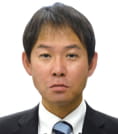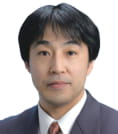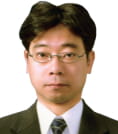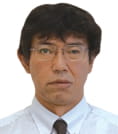[Nanomechanics] Year Started : 2020
Kenji Urayama
Innovative Toughening of Elastomers Based on Elucidatiting and Maximizing the Strain-Induced Crystallization Mechanism
Grant No.:JPMJCR2091
Research Director
Kenji Urayama

Professor
Graduate School of Engineering
Kyoto University
Collaborator
| Shinichi Sakurai | Professor Faculty of Fiber Science and Engineering Kyoto Institute of Technology |
| Takashi Taniguchi | Associate Professor Graduate School of Engineering Kyoto University |
| Katsuhiko Tsunoda | Expert Sustainable・Advanced Materials Division BRIDGESTONE Coporation |
| Keiji Numata | Professor Graduate School of Engineering Kyoto University |
Outline
Strain-induced crystallization (SIC) in natural rubber (NR) is a dynamic toughening mechanism triggered by mechanical stimulus, but the SIC performance of NR has not been updated for a long time. Our aims are to elucidate a nanoscale dynamics of SIC and the toughening mechanisum, and to establish a novel strategy to enhance the SIC performance leading to the innovative toughening of NR and synthetic rubbers.
Takashi Sumigawa
Exploring scientific principles of nano-micro fatigue and achieving ultra-high fatigue strength metals
Grant No.:JPMJCR2092
Research Director
Takashi Sumigawa

Professor
Graduate School of Energy Science
Kyoto University
Collaborator
| Yoshitaka Umeno | Professor Institute of Industrial Science The University of Tokyo |
| Hiroyuki Shima | Professor Graduate Faculty of Interdisciplinary Research University of Yamanashi |
Outline
We aim for revealing peculiar fatigue phenomena that emerge in nanometer- and micrometer-sized metals. We will realize fatigue experiments of nano-micro specimens, which have been extremely difficult thus far, and also develop a simulation framework with a groundbreaking concept. These concerted approaches will enable us to elucidate fatigue mechanisms from the viewpoint of nanomechanics. Further, we will establish novel scientific priciples of “nano-micro fatigue” with theoretical consistency. Moreover, we will propose design of materials with controlled dislocation structures created by cyclic loading to realize materials with ultra-high fatigue strength and unprecedented functions.
Masashi Mizukami
Multi-scale elucidation of friction mechanisms in ice-rubber interfaces
Grant No.:JPMJCR2093
Research Director
Masashi Mizukami

Associate Professor
New Industry Creation Hatchery Center
Tohoku University
Collaborator
| Kenji Yasuoka | Professor Faculty of Science and Technology Keio University |
Outline
In order to improve grip of tire on ice, an increasing interest to the interaction between ice and rubber has emerged. However, ice-rubber friction, governed by multiple factors, is complicated phenomenon, and the understanding of friction mechanism has been remained as a quite difficult issue. This project employs a combination of nano and macro approaches including simulation for studying ice-friction friction, and aims at understanding the governing factors (melting and premelting of ice, rubber viscoelasticity etc.) and their coupling, depending on the conditions as well as the rubber properties in order to elucidate the friction mechanisms of ice-rubber interfaces, propose a predictive model of ice-rubber friction, and establish a guideline to design innovative rubber materials.
Michiaki Yamasaki
Creation of Robust Metallic Materials on the Basis of the Multimodal Microstructure Design Strategy
Grant No.:JPMJCR2094
Research Director
Michiaki Yamasaki

Professor
Magnesium Research Center
Kumamoto University
Collaborator
| Kouji Hagihara | Professor Graduate School of Engineering Nagoya Institute of Technology |
| Ryosuke Matsumoto | Associate Professor Faculty of Engineering Kyoto University of Advanced Science |
Outline
In this project, we attempt to establish new materials design concept for creation of robust metallic materials based on the multimodal microstructure control. Using wrought magnesium alloys with long-period stacking ordered (LPSO) phase, we firstly clarify the mechanism for strengthening and ductilization of magnesium alloys with heterogeneous microstructure comprised of fine dynamically recrystallized grains and coarse fiber-textured grains. Then, based on the results of fundamental studies on deformation behavior in individual grains and at grain boundaries/phase interfaces in the multimodal microstructure, we try to produce novel multimodal microstructure/function-controlled materials with not only high strength and ductility but also increased toughness.
Jun Yamamoto
Nano mechanics based on the space-time hierarchical structure and the dynamic heterogenity in soft matter
Grant No.:JPMJCR2095
Research Director
Jun Yamamoto

Professor
Graduate School of Science
Kyoto University
Collaborator
| Makina Saitou | Associate Professor Graduate School of Science Tohoku University |
| Yumiko Naka | Associate Professor Faculty of Science DivisionⅡ Tokyo University of Science |
Outline
We invent the fluctuation microscope and quasi-elastic scattering of gamma ray to observe both in broadband of nano ~ meso scale dynamics in soft matter. We explore the intrinsic origin and mechanism of the space-time hierarchical structure and the dynamic heterogeneities and understand the nano mechanics of the complex soft matter. Non-linear behaviors such as yielding, or breakage of the materials will be investigated. We design and improve the performance of the mechanical behaviors by the artificial control of the dynamic heterogeneity of the material. Furthermore, the fluctuation microscope will be used for the conventional tools for industrial and medical applications by downsizing and mobilization.













